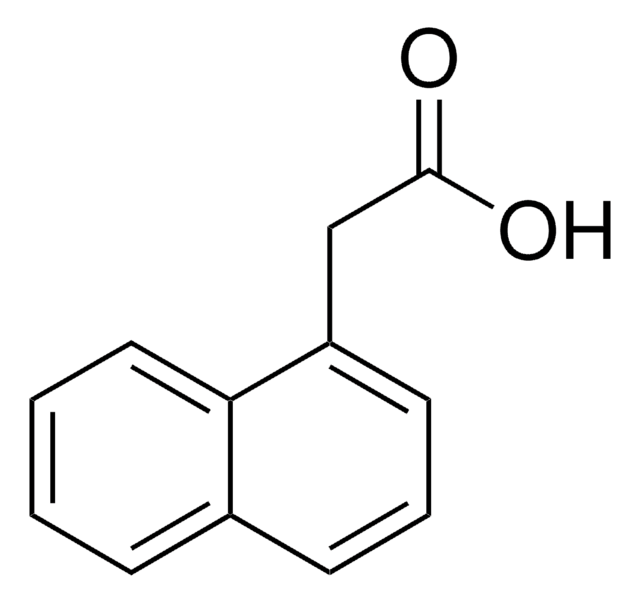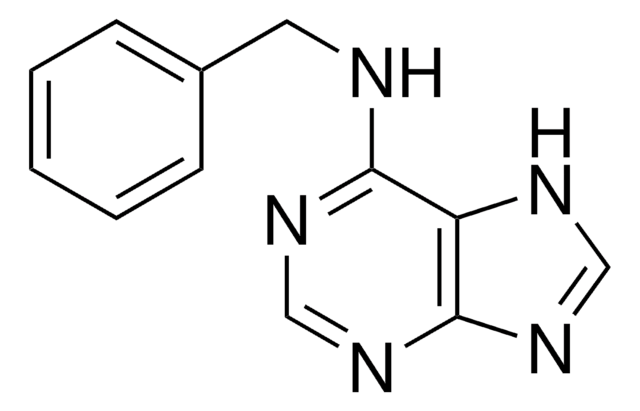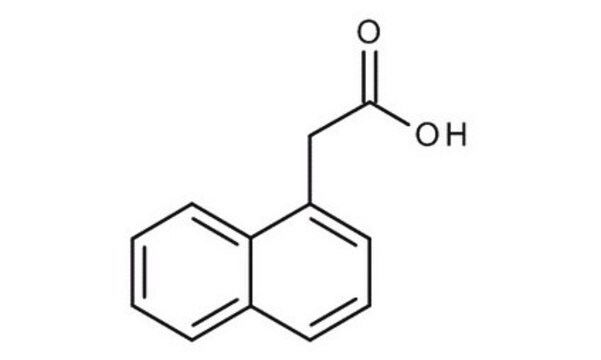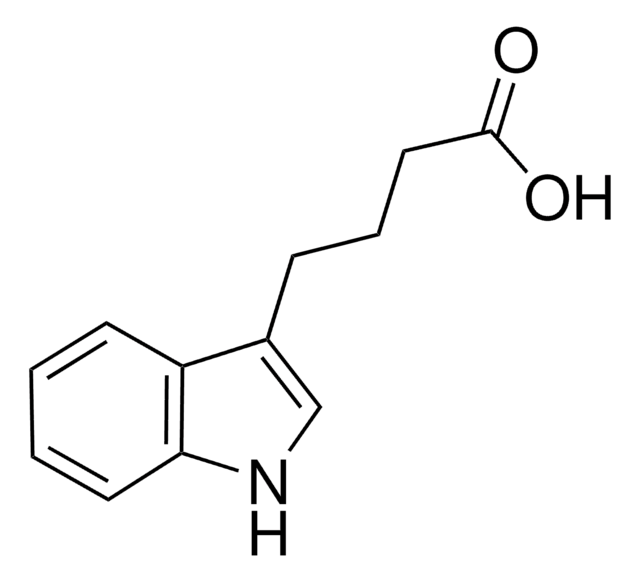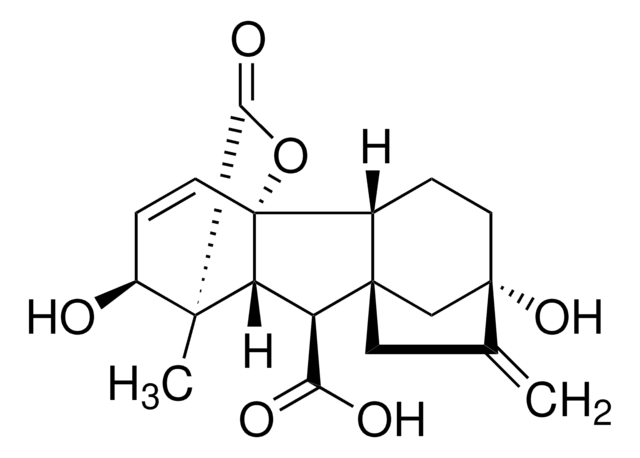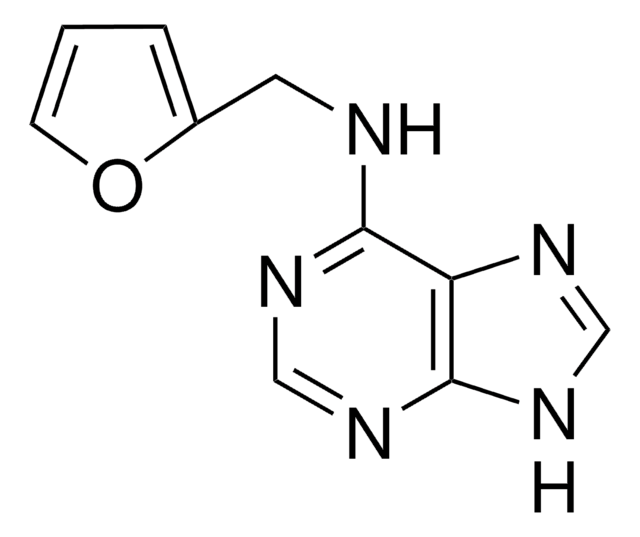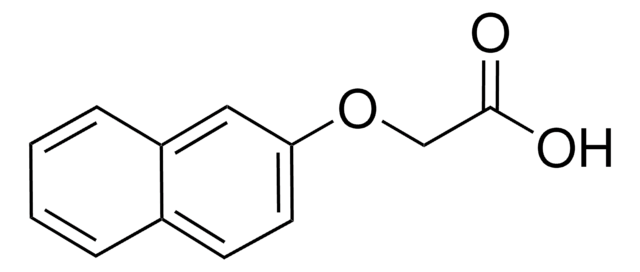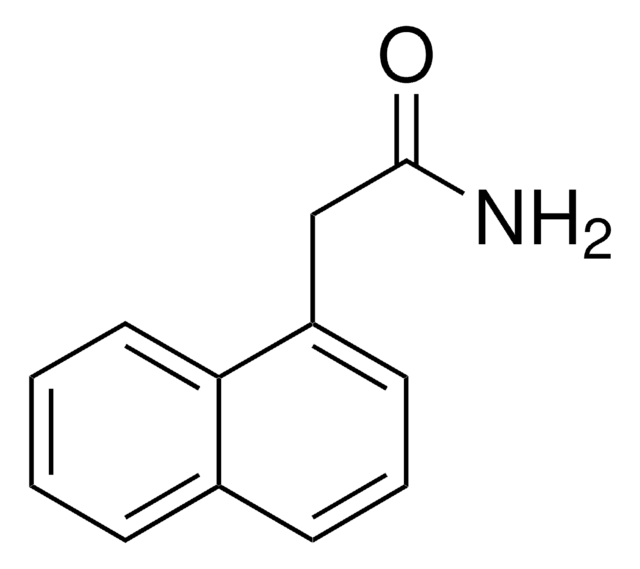Wszystkie zdjęcia(1)
Kluczowe dokumenty
N1641
1-Naphthylacetic acid
BioReagent, 1 mg/mL, suitable for plant cell culture
Synonim(y):
α-Naphthaleneacetic acid Free acid, 1-Naphthaleneacetic acid, NAA
Zaloguj sięWyświetlanie cen organizacyjnych i kontraktowych
About This Item
Wzór liniowy:
C10H7CH2CO2H
Numer CAS:
Masa cząsteczkowa:
186.21
Beilstein:
1308415
Numer MDL:
Kod UNSPSC:
10171502
Identyfikator substancji w PubChem:
NACRES:
NA.72
Polecane produkty
sterylność
sterile-filtered
Poziom jakości
linia produktu
BioReagent
Formularz
solution
stężenie
1 mg/mL
metody
cell culture | plant: suitable
mp
129-131.5 °C (lit.)
Zastosowanie
agriculture
temp. przechowywania
2-8°C
ciąg SMILES
OC(=O)Cc1cccc2ccccc12
InChI
1S/C12H10O2/c13-12(14)8-10-6-3-5-9-4-1-2-7-11(9)10/h1-7H,8H2,(H,13,14)
Klucz InChI
PRPINYUDVPFIRX-UHFFFAOYSA-N
informacje o genach
human ... CCKAR(886) , CCKBR(887)
Zastosowanie
1-Naphthaleneacetic acid (NAA) is a synthetic phytohormone auxin that is added to cell culture media such as Murashige & Skoog media and Chu′s N6 media.
Ta strona może zawierać tekst przetłumaczony maszynowo.
Kod klasy składowania
12 - Non Combustible Liquids
Klasa zagrożenia wodnego (WGK)
WGK 1
Temperatura zapłonu (°F)
Not applicable
Temperatura zapłonu (°C)
Not applicable
Wybierz jedną z najnowszych wersji:
Masz już ten produkt?
Dokumenty związane z niedawno zakupionymi produktami zostały zamieszczone w Bibliotece dokumentów.
Klienci oglądali również te produkty
Wei-Qiang Chen et al.
Proteomics, 10(3), 369-379 (2009-12-24)
Although silk is used to produce textiles and serves as a valuable biomaterial in medicine, information on silk proteins of the cocoon is limited. Scanning electron microscopy was applied to morphologically characterise the sample and the solubility of cocoon in
J Cao et al.
Plant cell reports, 21(8), 789-796 (2003-06-06)
We have developed an efficient protocol for the in vitro propagation of transgenic broccoli plants using leaf explants as starting material. A high frequency of shoot formation from leaf explants was obtained on Murashige and Skoog medium containing benzyladenine (BA
Fatima Naim et al.
PloS one, 15(1), e0227994-e0227994 (2020-01-25)
Introducing a new trait into a crop through conventional breeding commonly takes decades, but recently developed genome sequence modification technology has the potential to accelerate this process. One of these new breeding technologies relies on an RNA-directed DNA nuclease (CRISPR/Cas9)
Kuaifei Xia et al.
PloS one, 7(1), e30039-e30039 (2012-01-19)
The microRNA miR393 has been shown to play a role in plant development and in the stress response by targeting mRNAs that code for the auxin receptors in Arabidopsis. In this study, we verified that two rice auxin receptor gene
Tobias Kretzschmar et al.
Nature, 483(7389), 341-344 (2012-03-09)
Strigolactones were originally identified as stimulators of the germination of root-parasitic weeds that pose a serious threat to resource-limited agriculture. They are mostly exuded from roots and function as signalling compounds in the initiation of arbuscular mycorrhizae, which are plant-fungus
Nasz zespół naukowców ma doświadczenie we wszystkich obszarach badań, w tym w naukach przyrodniczych, materiałoznawstwie, syntezie chemicznej, chromatografii, analityce i wielu innych dziedzinach.
Skontaktuj się z zespołem ds. pomocy technicznej